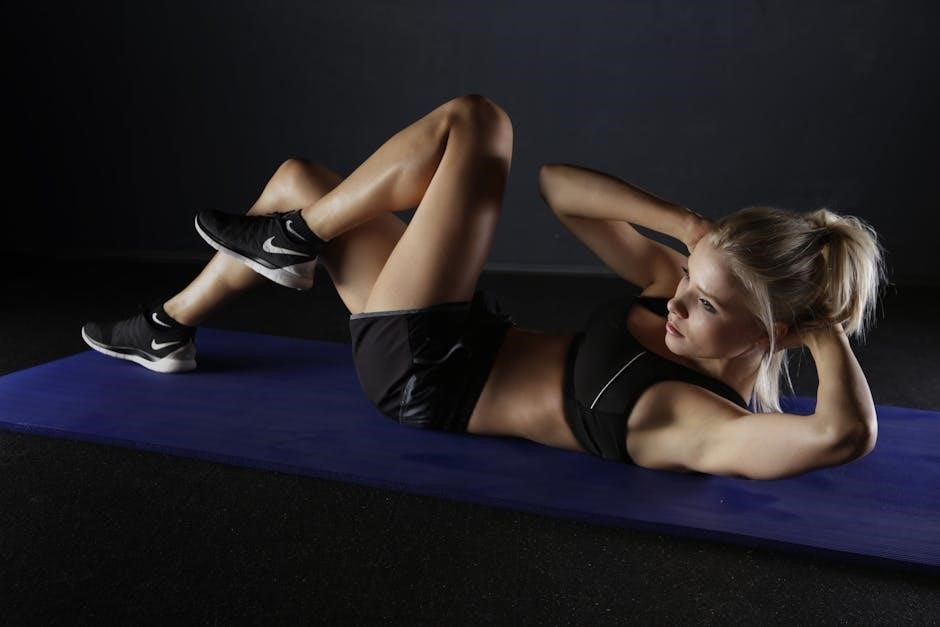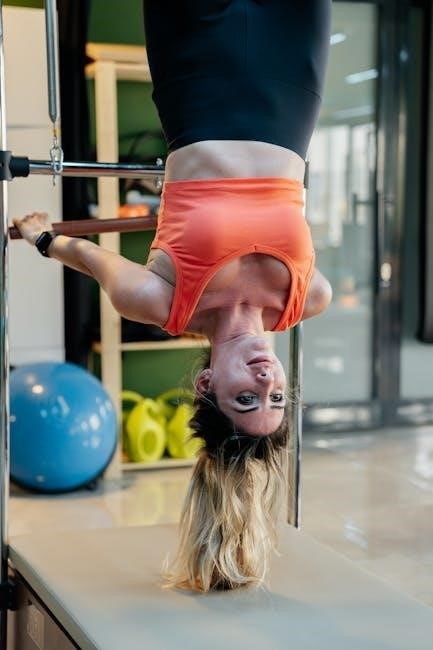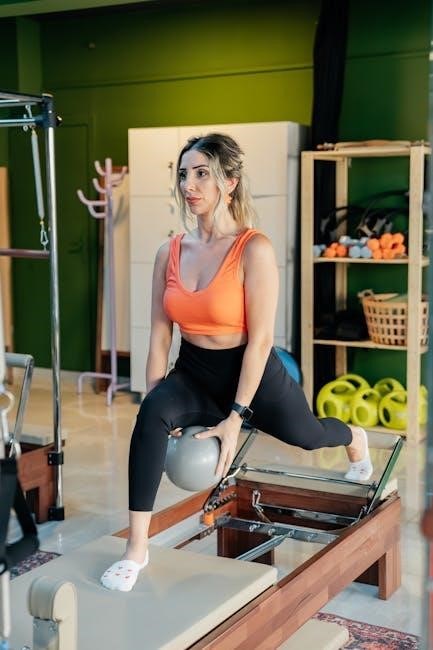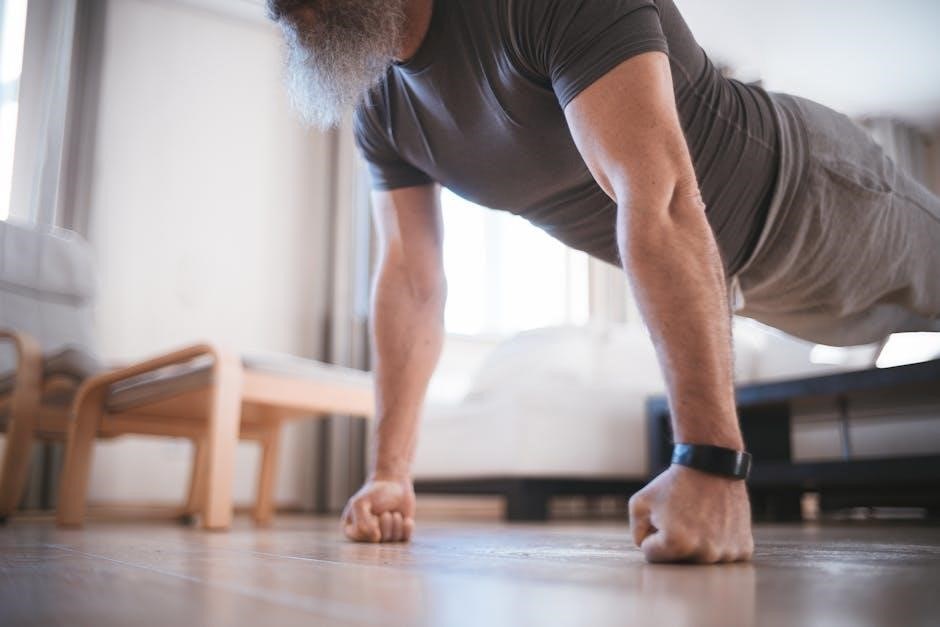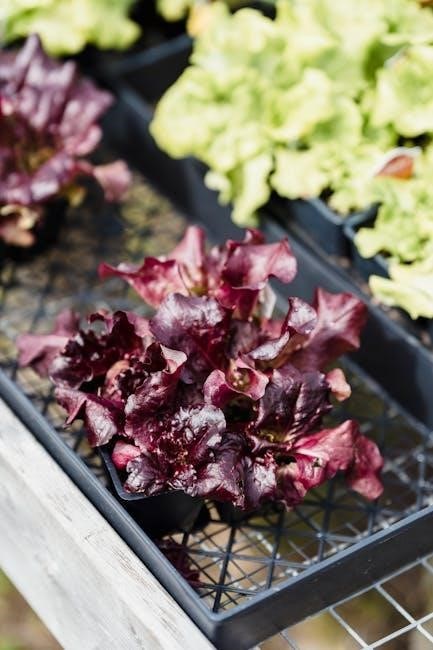Welcome to the Allen & Heath Qu-32 manual, your comprehensive guide to unlocking the full potential of this powerful digital mixer. Designed for professionals, this manual provides detailed insights into setup, operation, and advanced features, ensuring seamless control over your audio. With step-by-step instructions and troubleshooting tips, it’s an essential resource for achieving exceptional sound quality in live and studio environments.
1.1 Overview of the Qu-32 Mixer
The Allen & Heath Qu-32 is a professional digital mixer designed for live sound and studio applications. It features 32 input channels, 24 output channels, and 33 motorized faders for precise control. The mixer is equipped with a touchscreen interface, USB connectivity, and MIDI control, offering a user-friendly and versatile mixing experience. With its compact design and robust construction, the Qu-32 is ideal for both portable and fixed installations. Its advanced processing capabilities, including EQ and effects, make it a powerful tool for sound engineers. The mixer also supports scene memory for efficient workflow management and is backed by comprehensive guides for optimal use.
1.2 Importance of the Manual for Effective Use
The Qu-32 manual is essential for maximizing the mixer’s capabilities, providing detailed guidance on setup, operation, and troubleshooting. It ensures users understand advanced features like motorized faders, touchscreen navigation, and USB connectivity. The manual covers technical specifications, optimal configuration, and maintenance tips, helping professionals achieve high-quality sound. By following the manual, users can avoid common issues, customize settings, and leverage the mixer’s full potential for live performances and studio recordings. Its comprehensive instructions make it indispensable for both novice and experienced sound engineers seeking to master the Qu-32’s functionality.
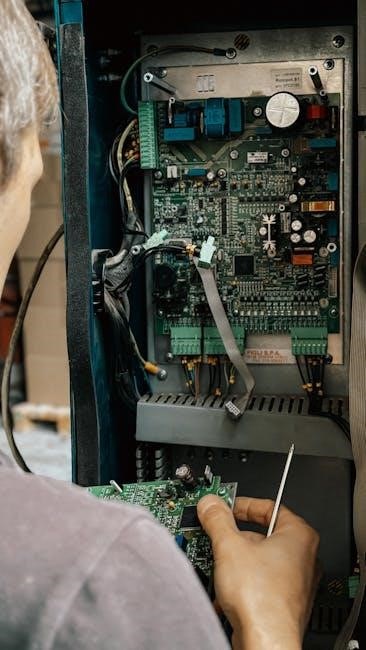
Qu-32 Manual Specifications
The Qu-32 manual details a 32-channel mixer with 28 outputs, 24 recallable preamps, and motorized faders. It measures 849mm (width), 471mm (depth), and weighs 20kg, ideal for live and studio use.
2.1 Number of Channels and Outputs
The Qu-32 mixer offers 32 input channels, providing ample connectivity for microphones, instruments, and other audio sources. It features 28 output channels, including 24 XLR outputs, enabling flexible routing for main mixes, subgroups, and auxiliaries. This configuration supports complex sound setups, making it ideal for live performances and professional installations. The mixer’s channel count and output options ensure versatility, accommodating a wide range of audio applications with precision and reliability.
2.2 Dimensions and Weight

The Qu-32 mixer measures 849 mm in width, 471 mm in depth, and 190 mm in height, making it a compact yet robust unit for professional use. It weighs approximately 20,000 grams (20 kg), ensuring durability without compromising portability. When packaged, the mixer weighs 24,000 grams (24 kg), reflecting its sturdy construction and reliability. These dimensions and weight specifications make the Qu-32 ideal for both live performances and studio setups, offering a balance of power and mobility for audio professionals.

2.3 Preamps and Faders
The Qu-32 features 32 recallable AnalogiQ microphone preamps, delivering pristine audio quality with low noise and high headroom. These preamps are designed to capture every detail of your audio sources, ensuring clarity and precision. The mixer also boasts 33 motorized faders, including 32 channel faders and a dedicated master fader. These faders are robust and smooth, allowing for precise level adjustments. Their motorized design enables seamless recall of settings during live performances or studio sessions, enhancing efficiency and control over your audio workflow. This combination of high-quality preamps and faders makes the Qu-32 a top choice for professional audio engineers.

Key Features of the Qu-32 Mixer
The Qu-32 mixer offers advanced features like motorized faders, a touchscreen interface, USB connectivity, MIDI control, and scene memory, providing unparalleled control and flexibility for professional audio mixing.
3.1 Motorized Faders
The Qu-32 mixer features 33 motorized faders, each providing precise and smooth control over audio levels. These faders are fully recallable, allowing you to save and recall settings for different scenes or mixes. With their high-resolution operation, they offer accurate adjustments, essential for live performances and studio recordings. Additionally, the faders are durable, designed to withstand frequent use, ensuring long-term reliability. Their touch-sensitive design enables quick access to channel settings, enhancing the overall mixing experience. This feature is a testament to the mixer’s professional-grade build and functionality.
3.2 Touchscreen Interface
The Qu-32 mixer features an intuitive touchscreen interface designed for seamless navigation and control. This high-resolution display provides real-time feedback on audio levels, EQ settings, and other critical parameters. With a user-friendly layout, the touchscreen allows quick access to various mixing functions, enabling efficient adjustments during live performances or studio sessions. The responsive design ensures precise control, while the visual clarity enhances your mixing experience. This feature streamlines workflow, making it easier to manage complex audio setups with confidence and precision.
3.3 USB Connectivity
The Qu-32 mixer is equipped with USB connectivity, offering versatile audio streaming and recording capabilities. This feature allows for bi-directional audio transfer, enabling 32 channels of playback and 30 channels of recording. Perfect for live performances and studio sessions, the USB port supports direct connection to computers for seamless integration with DAWs. It also facilitates easy playback of backing tracks and stereo recordings. The USB interface ensures high-quality audio transmission, making it an essential tool for professionals seeking reliable and efficient audio management solutions. This connectivity enhances the mixer’s versatility and expands its applications in various audio environments.
3.4 MIDI Control
The Qu-32 mixer features MIDI control, enabling seamless integration with MIDI-compatible devices such as synthesizers and drum machines. This functionality allows users to control external gear directly from the mixer, enhancing live performance capabilities. The MIDI implementation supports sending MIDI data from the Qu-32 to external devices, ensuring synchronized and precise control. This feature is particularly useful for musicians and sound engineers who rely on MIDI-driven equipment, providing an efficient way to manage complex audio setups. By leveraging MIDI control, the Qu-32 offers enhanced flexibility and creativity in both live and studio environments, making it a versatile tool for modern audio production.
3.5 Scene Memory
The Qu-32 mixer offers a robust Scene Memory feature, allowing users to save and recall specific mixer configurations. This is ideal for live performances, where consistent settings across multiple songs or scenarios are crucial. Scenes can be saved to any of the mixer’s memory locations, capturing fader levels, mutes, and other settings. Recalling a scene ensures a seamless transition between different parts of a performance. The Scene Memory feature also enables quick adjustments during sound checks, saving time and reducing the risk of errors. By organizing scenes efficiently, users can maintain professional-quality audio throughout their performances.

Setup and Installation
Start by connecting inputs and outputs using XLR or TRS cables. Power on the mixer and configure initial settings, such as gain levels and output assignments, ensuring optimal audio performance.
4.1 Connecting Inputs and Outputs
Connect microphones and instruments to the Qu-32’s XLR or TRS inputs, ensuring secure and balanced audio signals. Assign these inputs to the mixer’s 32 channels for precise control. For outputs, use the 24 XLR connectors to link the mixer to speakers, amplifiers, or additional audio equipment. The Qu-32 also features a USB Type-B port for recording or playback, enabling seamless integration with computers. Properly label and organize cables to maintain clarity and prevent signal loss. This setup ensures optimal audio routing and prepares the mixer for professional-grade sound engineering in live or studio environments.
4.2 Initial Setup and Configuration
Power on the Qu-32 and navigate to the home screen. Set the mixer to your preferred audio interface mode and configure the output patching to match your sound system. Assign inputs to channels, ensuring proper gain staging for optimal sound quality. Use the touchscreen to label channels and customize fader layouts for easy access. Set up monitor mixes by routing auxiliary sends to performers’ monitors. Initialize scenes to save your configuration for future use. Finally, calibrate the mixer’s settings to align with your acoustic environment, ensuring a professional-grade setup tailored to your needs.

Basic Operations
Master the Qu-32’s core functions by navigating its intuitive interface, adjusting input levels, and applying EQ settings. Use the motorized faders for precise control, and explore effects to enhance your mix. Set up monitor mixes efficiently and utilize the touchscreen for quick adjustments, ensuring a smooth and professional mixing experience tailored to your audio needs.
5.1 Navigating the Interface
Navigating the Qu-32’s interface is straightforward, thanks to its intuitive design. The touchscreen display provides easy access to all functions, while motorized faders offer precise control. Use the Home screen to access key settings, and utilize the channel strip for quick adjustments to EQ, dynamics, and effects. The interface is divided into logical sections, such as Channel, Mix, and Effects, making it easy to locate and adjust parameters. Customizable layouts allow you to tailor the interface to your workflow, ensuring efficient operation during live performances or studio sessions.
5.2 Adjusting Levels and EQ
Adjusting levels and EQ on the Qu-32 is a seamless process. Use the motorized faders to set input levels, ensuring optimal gain staging. For EQ adjustments, access the channel strip via the touchscreen and adjust the High, Mid, and Low frequencies using the rotary encoders. The Q parameter allows for precise control over the bandwidth of each EQ band. Additionally, the channel strip provides access to dynamics processing, enabling compression and gating adjustments. These tools empower you to shape your sound with precision, ensuring clarity and balance in your mix.
5.3 Using Effects and Processing
Using effects and processing on the Qu-32 enhances your mix with precision. Assign effects to individual channels using the effects sends, adjusting levels to achieve the desired impact. For the overall mix, utilize the FX returns to blend effects seamlessly. The Qu-32 offers a range of built-in effects, from reverbs to delays, which can be customized to suit your audio needs. Access the effects section via the touchscreen and tweak parameters for tailored sound shaping. With intuitive controls and real-time adjustments, the Qu-32 makes it easy to create a polished and professional mix.
5.4 Setting Up Monitor Mixes
Setting up monitor mixes on the Qu-32 allows performers to hear themselves clearly. Enable the desired monitor mix and route signals from input channels using the Aux Send controls. Adjust the levels for each channel to achieve a balanced mix. Use the touchscreen to customize the monitor mix, ensuring each performer’s needs are met. You can also assign effects specifically to the monitor mix for enhanced clarity. Once configured, save your monitor mix settings as a scene for quick recall during performances. This feature ensures consistent and professional monitoring for all performers on stage.

Advanced Features
The Qu-32 offers advanced features like motorized faders, a touchscreen interface, and MIDI control, enabling precise mixing and customization. Use scene memory to save and recall settings for seamless transitions during performances.
6.1 Customizing the Mixer Layout
The Qu-32 mixer offers extensive customization options to tailor its layout to your workflow. Using the touchscreen interface, you can rearrange channels, assign custom labels, and adjust fader banks to prioritize frequently used controls. Additionally, the mixer allows you to personalize the interface by renaming channels and assigning color-coded tags for better organization. Motorized faders can be programmed to recall specific scenes, while DCA groups enable you to control multiple channels simultaneously. These features ensure a personalized mixing experience, enhancing efficiency and creativity during live performances or studio sessions.
6.2 Using DCA Groups
DCA (Digitally Controlled Amplifier) groups on the Qu-32 mixer provide advanced control over multiple channels simultaneously. By assigning channels to DCA groups, you can adjust their levels, mutes, and pans with a single fader or button. This feature is ideal for managing complex mixes, such as controlling groups of drums, vocals, or instruments. DCA groups can be customized to suit your mixing needs, allowing for seamless adjustments during live performances. This functionality enhances your workflow, enabling precise and efficient control over your audio, ensuring a polished and professional sound.
6.3 Managing Scenes and Presets
Scenes and Presets allow you to save and recall specific mixer configurations. Scenes store the entire mixer state for quick recall during performances. Presets save individual channel or effect settings, enabling rapid configuration. Use the Scene Memory section to save, recall, and manage Scenes, ensuring smooth transitions between different mixer states. Presets can be applied to channels or effects for consistent sound. Regularly back up your Scenes and Presets to prevent loss. This feature enhances efficiency and ensures professional sound quality in live and studio environments.

Troubleshooting Common Issues
Troubleshooting common issues ensures optimal performance. Address audio dropouts, fader malfunctions, and connectivity problems by consulting the manual. Regular maintenance and updates prevent recurring faults effectively.
7.1 Resolving Audio Dropout
Experiencing audio dropout on your Qu-32? Start by checking all connections, ensuring secure XLR or TRS cables. Verify that gain levels are appropriately set to avoid signal loss. Next, inspect the USB interface if using audio streaming—firmware updates may resolve compatibility issues. Restart the mixer and connected devices to reset the system. If issues persist, consult the manual for advanced troubleshooting steps or contact Allen & Heath support for assistance. Regular firmware updates and proper maintenance can prevent future dropouts, ensuring reliable performance during critical recordings or live shows.
7.2 Fixing Fader Issues
Encountering issues with your Qu-32 faders? Begin by ensuring the mixer is powered off, then gently clean the faders with a dry cloth to remove dust or debris. If a fader is unresponsive, recalibrate it via the mixer’s setup menu. Navigate to the Fader Calibration option and follow on-screen instructions. If the problem persists, check for firmware updates, as outdated software may cause malfunctions. For severe damage, contact Allen & Heath support for repair or replacement. Regular maintenance and proper handling will help maintain optimal fader performance and extend the mixer’s lifespan.
7.3 Solving Connectivity Problems
Experiencing connectivity issues with your Qu-32? Start by verifying all physical connections, ensuring cables are securely plugged in and free from damage. Check that inputs and outputs are correctly patched according to your setup. If using digital connections, ensure the correct mode is selected in the mixer’s setup menu. Restart the mixer and connected devices to reset communication. For USB issues, try a different USB cable or port. If problems persist, update the mixer’s firmware to the latest version. Consult the manual or contact Allen & Heath support for further assistance. Regularly inspect and maintain cables to prevent connectivity disruptions.

Maintenance and Support
Regularly clean the mixer with a soft cloth and update firmware for optimal performance. For issues, refer to the warranty or contact Allen & Heath support.
8.1 Cleaning and Care
Regular cleaning is essential to maintain the Qu-32’s performance and longevity. Use a slightly damp, soft cloth to wipe down the surface, removing fingerprints and dust. Avoid harsh chemicals or abrasive materials, as they may damage the finish or harm sensitive components. For hard-to-reach areas, use compressed air to gently remove dust and debris. Always power off the mixer before cleaning to prevent accidental damage. Avoid touching the touchscreen or faders excessively, as oils from skin can leave residue; For internal maintenance, refer to the manual or consult a professional to ensure proper care and warranty preservation.
8.2 Firmware Updates
Regular firmware updates are crucial to ensure the Qu-32 operates at its best, with improved features and bug fixes. Visit the Allen & Heath website to download the latest firmware version. Transfer the update to a USB key and use the Firmware Update utility within the mixer to install it. Always back up your settings before updating, as the process may reset configurations. Follow the on-screen instructions carefully to avoid interruptions or data loss. Updating firmware enhances performance, adds new functionalities, and ensures compatibility with the latest audio systems. Refer to the manual for detailed steps and precautions during the update process.
8.3 Warranty and Support Options
The Qu-32 is backed by Allen & Heath’s warranty, covering defects in materials and workmanship for a specified period. Register your product to ensure coverage and access to priority support. For troubleshooting or technical assistance, visit the official website for FAQs, user manuals, and contact details. Allen & Heath also offers dedicated customer service and authorized service centers worldwide. Additionally, online forums and community resources provide peer-to-peer support, ensuring comprehensive assistance for optimal mixer performance; Reach out to their support team for any queries or issues beyond the manual’s guidance.











